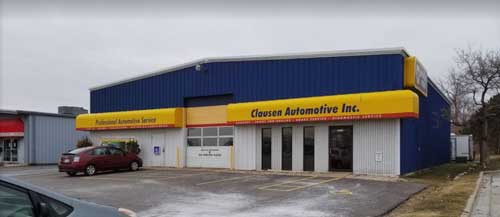Radiator Service: Remember the Coolant!
After winter's freezing temperature, it is wise to schedule a radiator service to check the antifreeze/coolant mixture. After working hard all winter to protect your engine from freezing, it is possible that it has lost its protective effectiveness and needs to be either topped off, or replaced all together. Most drivers know that ignoring this important radiator service could lead to a costly radiator repair during the hot summer months!
As the engine operates, the antifreeze/coolant mixture performs its primary function of carrying heat to the radiator, preventing freezing, and protecting against corrosion. It also keeps that same water from boiling over in the summer. Another function of antifreeze/coolant is to lubricate the moving parts it comes in contact with, like the water pump.
The key to longevity is maintaining the cooling system's freeze point protection and coolant level. Almost all coolants work best at the ideal freeze point mixture, which generally is a 50/50 antifreeze-to-water mixture. At this level, antifreeze protects to -34°F and boil-over protection to 257°F.
It used to be that no matter which brand of antifreeze/coolant you chose, the color was always green, mixed with water (50/50), poured into the radiator, and then simply changed at the prescribed radiator service interval. Because there are now numerous types of antifreeze technology in a rainbow of colors, ask for professional assistance from a radiator repair specialist. Most radiator service technicians agree that it is best to use the same type of coolant that was originally used by the vehicle manufacturer.
There are two harmful issues to remember:
- Consistently low coolant level –The steam vapors of the glycol/water mix can create a corrosive environment--more corrosive than either fluid by itself.
- The water -- Use distilled water, not tap or filtered, when refilling any cooling system. Tap water contains minerals such as magnesium and calcium that can form deposits, especially on the engine's hottest parts.
Remember: The manufacturer's recommended replacement interval for antifreeze/coolant is generally every three years or 36,000 miles. Check your owner's manual for your specific vehicle.
Want to prevent a major radiator repair? Contact our ASE Certified Technicians at Clausen Automotive by calling (608) 221-8321 or go on-line at https://www.clausenautomotive.com for more information about radiator service. Since 1975, our family-owned auto shop has proudly served vehicle owners in Madison, WI, and the surrounding communities.
Schedule a Radiator Service to check the level and mixture of coolant. Prevent an unexpected Radiator Repair during summer's hot temperatures.After winter's freezing temperature, it is wise to schedule a radiator service to check the antifreeze/coolant mixture. After working hard all winter to protect your engine from freezing, it is possible that it has lost its protective effectiveness and needs to be either topped off, or replaced all together. Most drivers know that ignoring this important radiator service could lead to a costly radiator repair during the hot summer months!
As the engine operates, the antifreeze/coolant mixture performs its primary function of carrying heat to the radiator, preventing freezing, and protecting against corrosion. It also keeps that same water from boiling over in the summer. Another function of antifreeze/coolant is to lubricate the moving parts it comes in contact with, like the water pump.
The key to longevity is maintaining the cooling system's freeze point protection and coolant level. Almost all coolants work best at the ideal freeze point mixture, which generally is a 50/50 antifreeze-to-water mixture. At this level, antifreeze protects to -34°F and boil-over protection to 257°F.
It used to be that no matter which brand of antifreeze/coolant you chose, the color was always green, mixed with water (50/50), poured into the radiator, and then simply changed at the prescribed radiator service interval. Because there are now numerous types of antifreeze technology in a rainbow of colors, ask for professional assistance from a radiator repair specialist. Most radiator service technicians agree that it is best to use the same type of coolant that was originally used by the vehicle manufacturer.
There are two harmful issues to remember:
- Consistently low coolant level –The steam vapors of the glycol/water mix can create a corrosive environment--more corrosive than either fluid by itself.
- The water -- Use distilled water, not tap or filtered, when refilling any cooling system. Tap water contains minerals such as magnesium and calcium that can form deposits, especially on the engine's hottest parts.
Remember: The manufacturer's recommended replacement interval for antifreeze/coolant is generally every three years or 36,000 miles. Check your owner's manual for your specific vehicle.
Want to prevent a major radiator repair? Contact our ASE Certified Technicians at Clausen Automotive by calling (608) 221-8321 or go on-line at https://www.clausenautomotive.com for more information about radiator service. Since 1975, our family-owned auto shop has proudly served vehicle owners in Madison, WI, and the surrounding communities.



